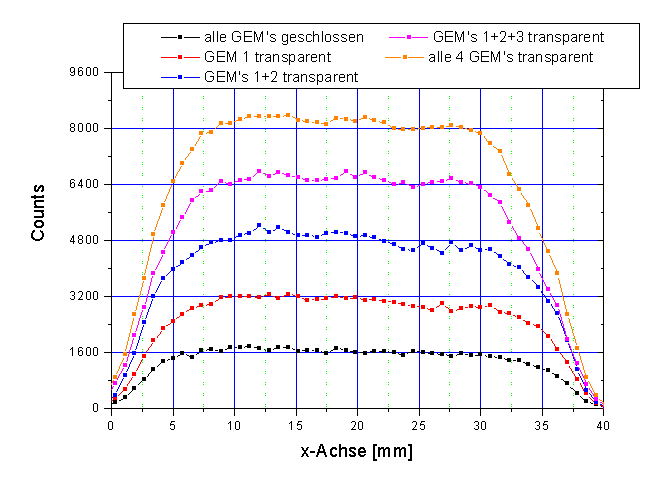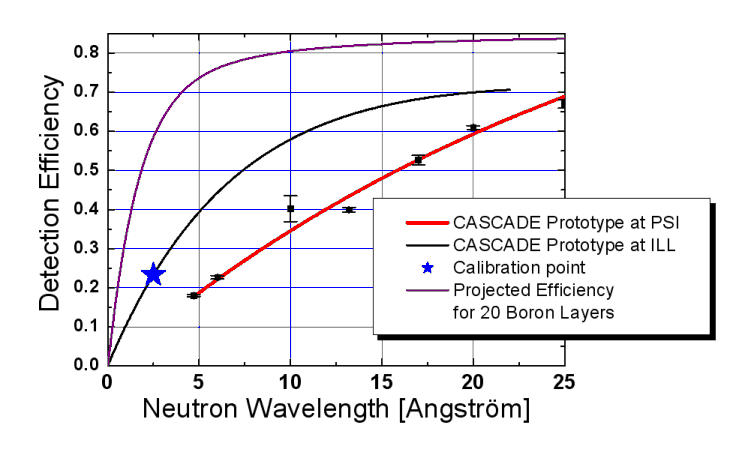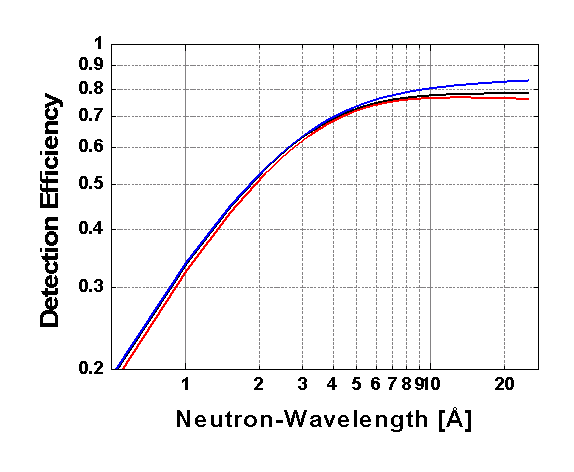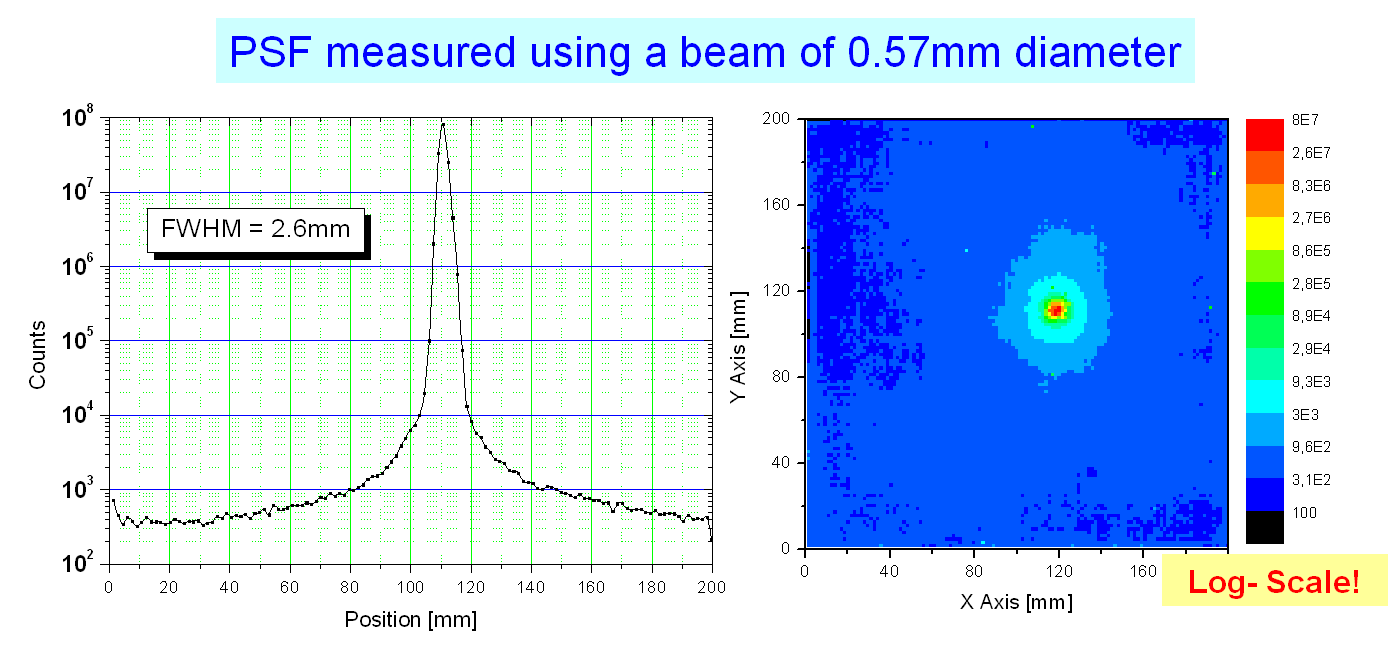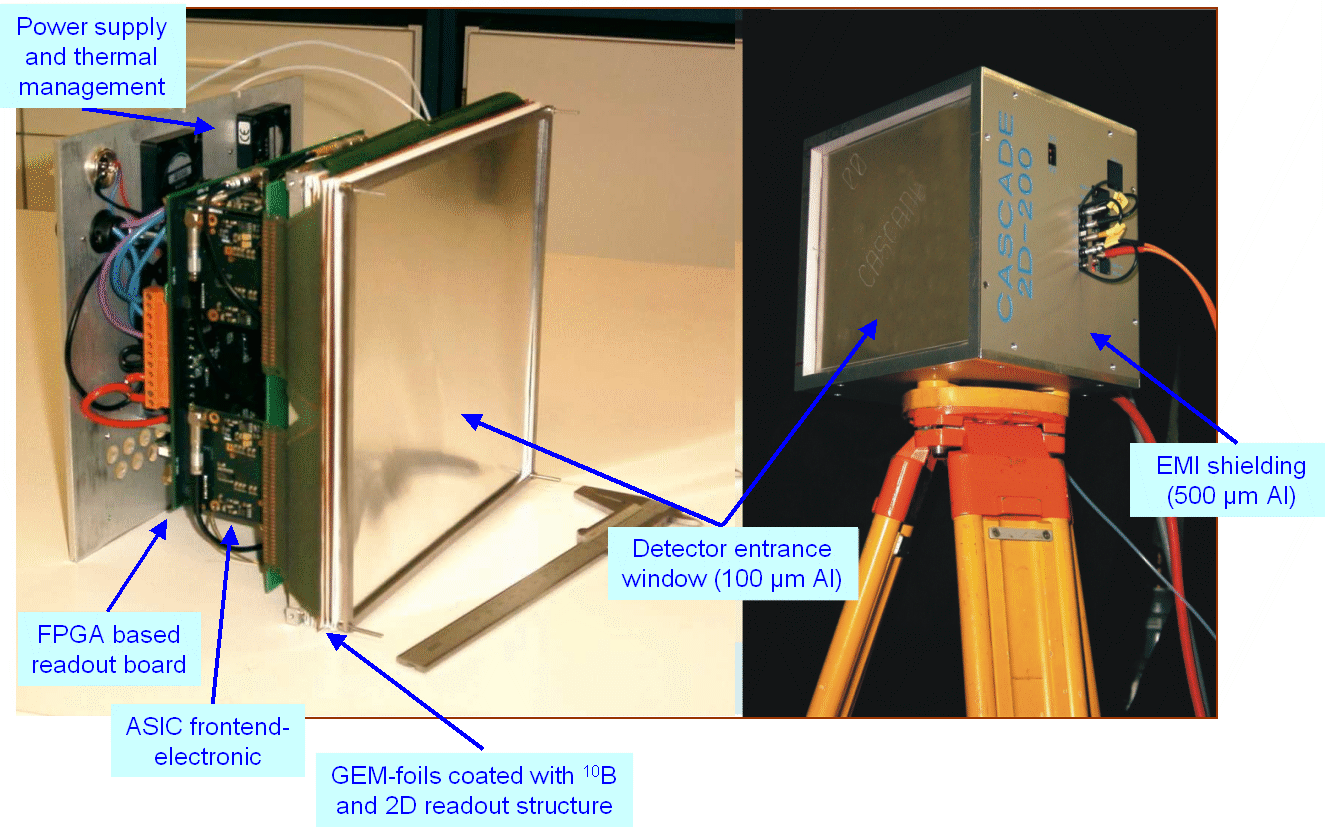Experimental Test Results and Further Developments
Distribution of Pulse Hights
The Detection Cascade
High-Rates Capability
Detection-Efficiecy
Spatial Resolution
Actual Prototype
Detailed calculations with respect to detection efficiency and spatial resolution have been performed in preparation to the layout of solid converter coatings. A thorough understanding of the pulse hight distribution with varying converter thickness could be obtained. Further, various coating processes were investigated, and some quite stray, ingenious methods invented, in order to obtain stable neutron-converting coatings on the GEM-foils.
Pulse Hight Distribution
Single Boron coatings on GEMs allowed to confirm the theoretical models towards the pulse hight distribution.
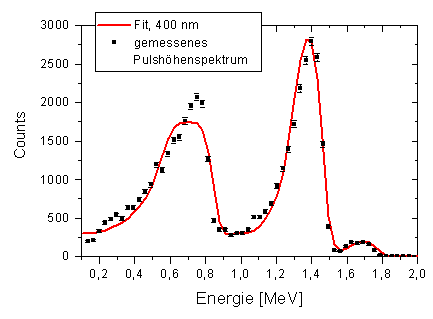 Pulse hight distribution as measured on a 400 nm Boron coating. |
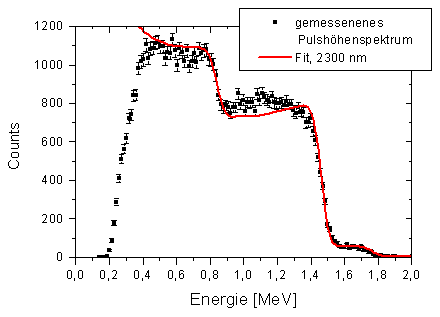 Pulse hight distribution as measured on a boron coating of about 2.3 mm thickness. |
The multi Boron layer cascade
The first operable coated GEM-foils (4cm x 4cm) allowed to prove unambiguously that cascaded GEM-foils do serve as charge-transparent substrate for thin neutron converting coatings such as Boron. Spatial resolution was better than 3 to 5mm and the spatial information could be imaged without distortions through several successive coated GEM-foils onto a signal readout electrode. The detector is operatad at ambient pressure and is absolutely insensitive to gamma background.
Neutron Detection Rate Capability
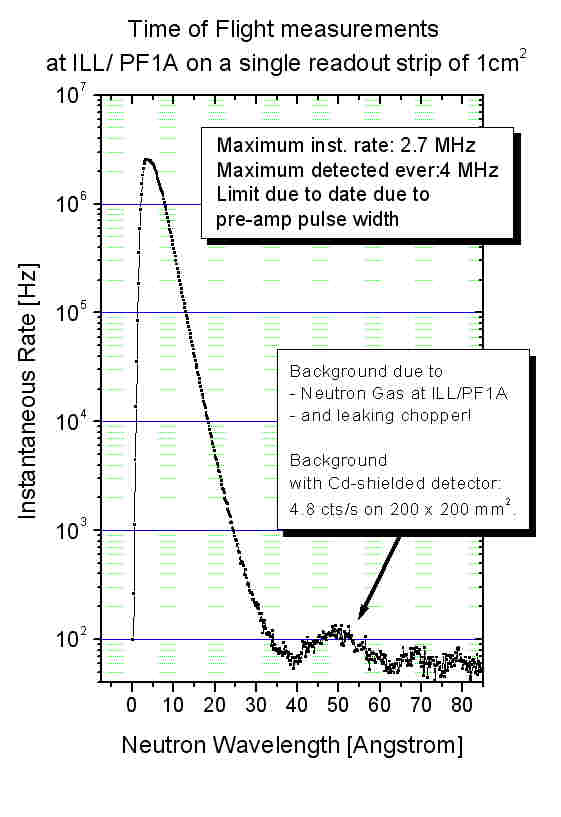 |
TOF spectrum measured in the direct beam of PF1a at the ILL/Grenoble with a CASCADE-Prototype
of size 100mm x 100mm. Instantaneous count rates of 2.7 MHz have been observed on one single readout channel without
saturation of the detector. The background level is due to the neutron gas scattered on air within the casematte of PF1a and due to a leakage in the inhomogeneous absorbing coating of the chopper disk (see the wiggle at 50 Angström which depends on chopper frequency). A Linear plot of the TOF spectrum is given here. |
Detection Efficiency
Spatial Resolution
The image above shows data taken at FZ Jülich with a collimated neutron beam and a
collimator orifice of 0.57mm in diameter. A single
readout strip of the 2D-readout structure has 1.57mm width. These measurements were performed with
a 200mm x 200mm CASCADE area detector and a mixture of counting gas 90/10
Argon/CO2. The precise value of spatial resolution
can be manipulated through the choice of
the counting gas mixture. Typical value for spatial resolution with ambient operating
pressure is 2.6mm. For special configurations (several bar of overpressure), resolution can be
as small as 1mm.


